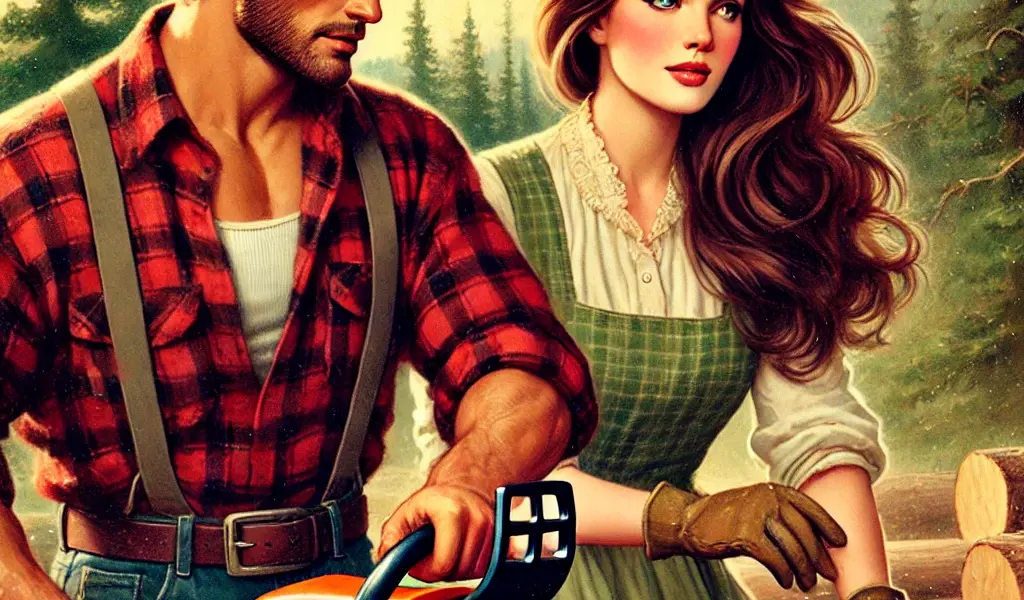1. Basic Maintenance for Longevity
A well-maintained chainsaw lasts longer, performs better, and stays safer to use. Follow these routine maintenance steps to keep your saw in top shape:
- Clean the Air Filter & Cooling Fins – A clogged filter chokes performance, and dirty cooling fins can cause overheating.
- Keep the Bar and Chain Clean – Sawdust, oil buildup, and debris should be wiped away regularly.
- Proper Chain Tensioning & Lubrication – A loose chain can derail, while an overly tight chain can damage the bar. Keep your scrench and extra clutch cover bolts with your saw or on your person when out cutting.
- Check Fuel & Oil Mixtures for 2-Stroke Engines – Using the wrong ratio or leaving old fuel in the tank can cause serious issues. You can buy pre-measured oil amounts for mixing and just keep the canister. Oil is much cheaper to buy in bulk, by the gallon. Ease of use costs a premium. Pre-mixed fuel is also available but you’ll think you’re living in a Mad Max sequel at the prices they charge. Just mix it yourself in 1 gallon batches and treat it. It’s even better if you can find non-ethanol fuel from a local distributor. Check your chainsaw manufacturers specs to see if the have a minimum octane rating (87, 89, 93, etc.)
2. Common Chainsaw Issues & Fixes
Even with proper maintenance, chainsaws can develop problems. Here are some of the most common ones and how to fix them:
- Chain Keeps Slipping Off – If the chain keeps coming off the bar, check the drive links (the teeth that sit in the bar groove). Damaged or deformed links can cause the chain to unseat. Inspect the chain for irregular wear and use a file to smooth out any burrs or damaged nibs that prevent the chain from seating properly. Just takes a file, time and patience.
- Chain Won’t Move – Check if the chain brake is engaged or if the clutch is worn out. If the brake band inside the clutch cover is damaged it will prevent the chain from moving. It’s a cheap and easy fix.
- Hard to Start – Clean or replace the spark plug, check fuel lines, and clean the carburetor. You can usually get maintenance kits that include air filters, sparkplugs, fuel line, etc. from your chainsaw dealer, tractor supply or amazon.
- Dull Chain? – Sharpen it using a round file and guide or a sharpening tool.
- Bar Wear & Replacement – If your bar is unevenly worn or pinched, it’s time to replace it. The old one is just a homestead decoration now.
3. Advanced Repairs (With Caution)
For those comfortable working with their saw’s components, here are some more advanced fixes:
- Clutch Replacement – If the clutch slips excessively or won’t engage, it may need replacing.
- Fixing Oil Pump Issues – If the chain isn’t getting lubricated, clean or replace the oil pump.
- Replacing a Pull Cord or Starter Assembly – A broken pull cord can be replaced with a few simple tools.
4. Safety First!
Chainsaws are powerful tools, but they can be dangerous if used improperly. Always follow these safety measures:
- Wear Protective Gear – Gloves, chaps, eye protection, and hearing protection are essential.
- Use Proper Handling Techniques – Always hold the saw with both hands and cut at waist height or below.
- Engage the Chain Brake When Moving – Prevent accidental engagement by always locking the chain.
5. Tools Every Chainsaw Owner Should Have
Having the right tools makes maintenance and repairs easier. Here’s what you should keep on hand:
- File and Guide for Sharpening – Keep your chain sharp to prevent kickback and increase cutting efficiency.
- Scrench (Combo Wrench/Screwdriver) – Essential for bar adjustments and maintenance.
- Spare Chains, Bar Oil, and Grease – Having backups ensures you’re never caught unprepared.
- Replacement Chain Brake Bands and Clutch Parts – Critical spares for when parts wear out unexpectedly.
6. Never Put Away a Broken Chainsaw
🚫 Don’t Store It Until It’s Fixed! 🚫
If your chainsaw isn’t running properly, fix it before putting it away—otherwise, you’re cursing your future self.
- Problems compound with inactivity – Old fuel gums up, seals dry out, rust creeps in.
- You’ll need it when you least expect it – A storm, a fallen tree, or an urgent project won’t wait for repairs.
- A non-working tool is just dead weight – A neglected saw turns into a useless hunk of metal.
👉 Fix it, clean it, sharpen it, then store it! Your future self will thank you.
7. Proper Storage After Use
A chainsaw that is properly stored lasts longer and is always ready when you need it. Here’s how to store it right:
- Empty or Treat Fuel – Never leave old gas sitting in the tank. Either drain it completely or add a fuel stabilizer to prevent gumming.
- Label Mixed Fuel Clearly – If you mix your own fuel, mark it properly to avoid using stale or incorrect fuel in the future.
- Find Ethanol-Free Fuel Locally (if possible) – Some local gas offer gasoline with no ethanol mixture that will last longer and not gum up the works.
- Consider Pre-Mixed Fuel – Pre-mixed ethanol-free fuel can be a hassle-free alternative that extends engine life.
- Store in a Dry, Secure Location – Keep your chainsaw in a protective case or on a shelf away from moisture and debris.
- Organize Your Chainsaw Gear – Use a dedicated gear bag for protective equipment (coveralls, helmet, ear protection, gloves, wedges, etc.).
- Chainsaw Case for Tools & Spares – A proper case should hold your scrench, spare bolts, files, extra chain, bar oil, and any other accessories needed for quick fixes in the field.
Having everything in one place ensures that when you need your chainsaw, you’re not scrambling for missing parts or safety gear. Make sure to get a helmet, hearing protection and technical apron. The chain catcher on your chainsaw costs less than a value meal at your favorite junk food palace. Without safety gear it will be the only thing between you and ripped femoral artery out in the woods somewhere where no-one can hear your calls for help. Don’t entrust your life and your family’s continued success on a tiny piece of metal.
Keeping your chainsaw in top condition ensures it’s always ready when you need it. Whether it’s for cutting firewood, clearing fallen trees, or general homestead work, a well-maintained chainsaw is a reliable tool that won’t let you down.


